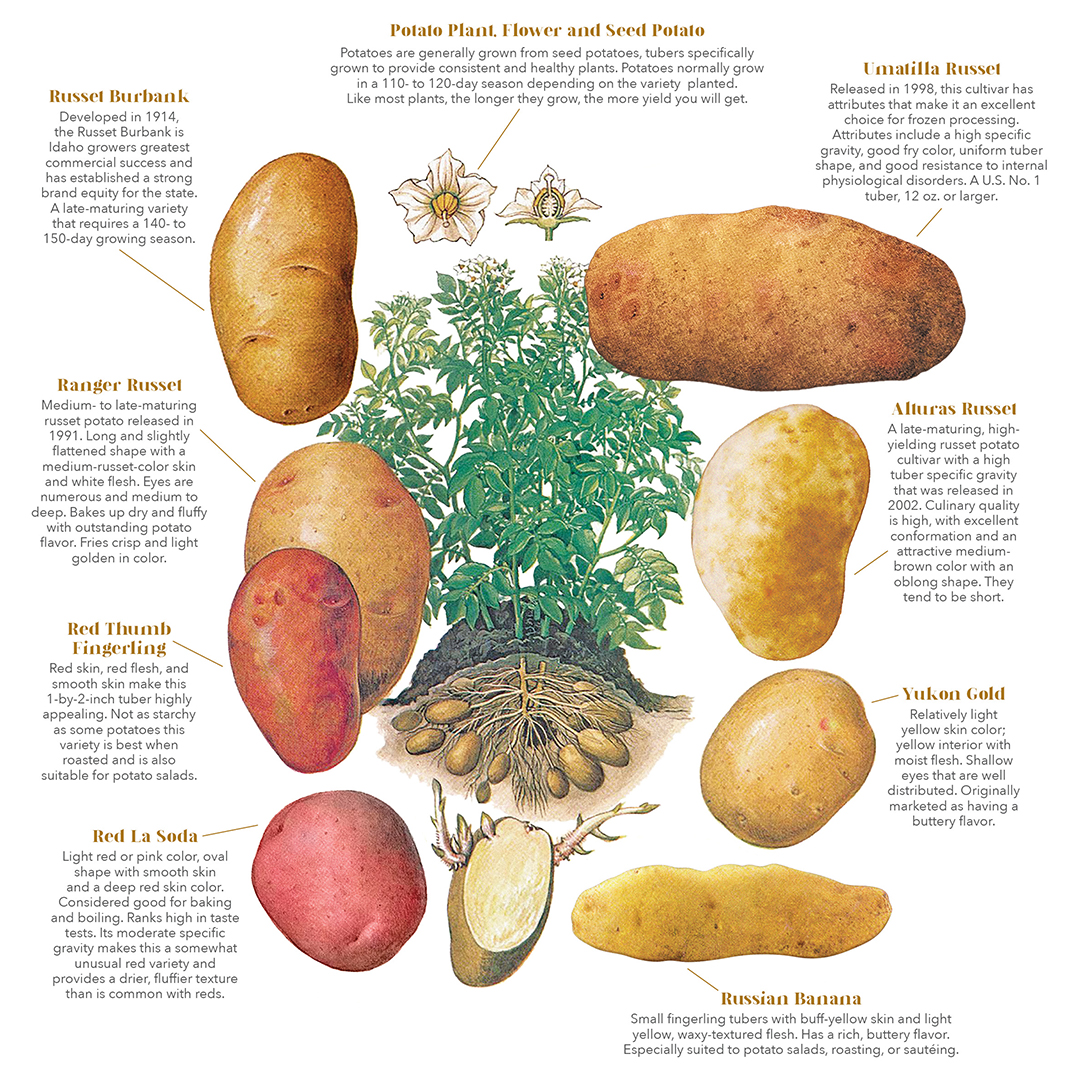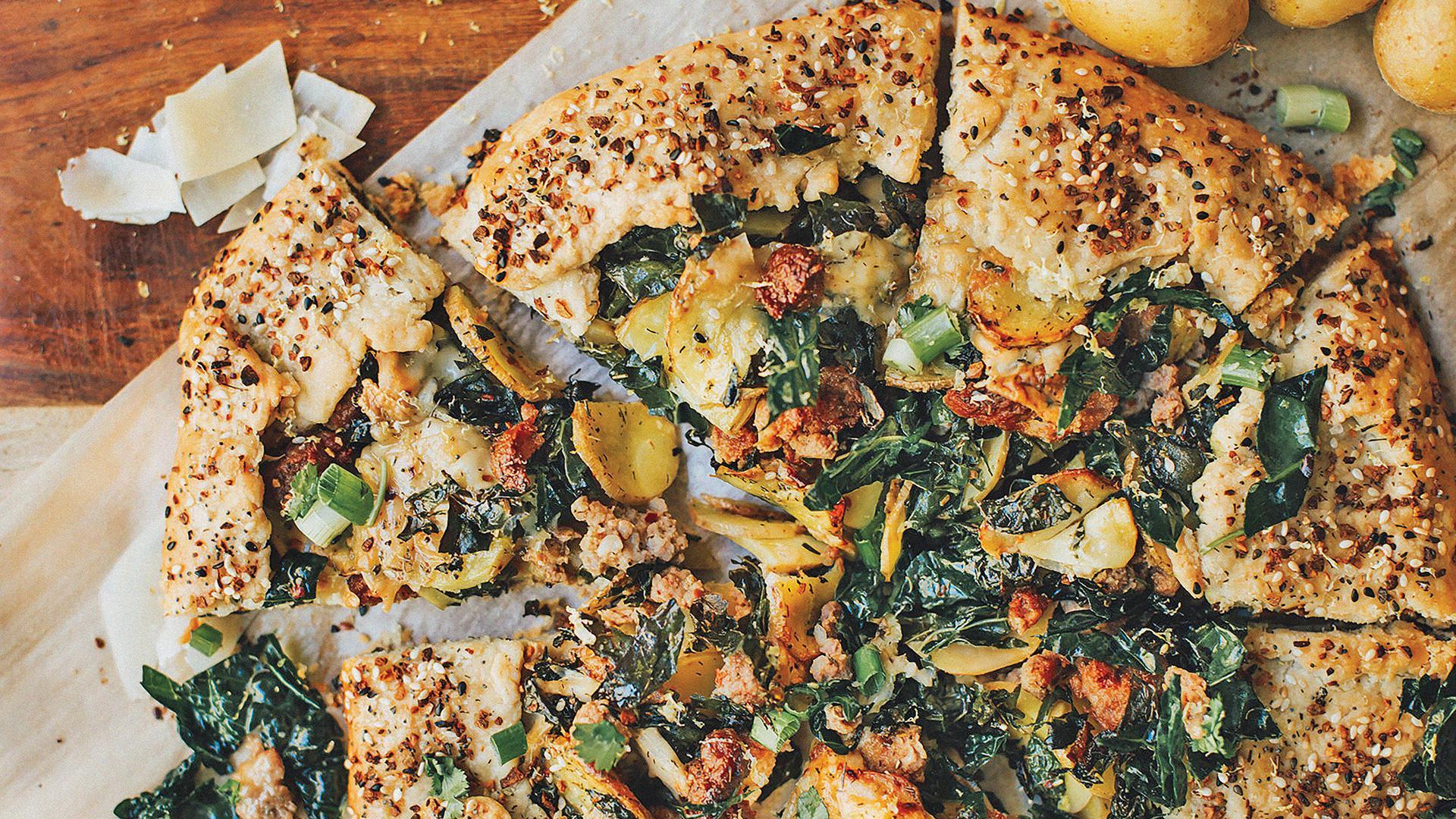No matter where in the world you travel, the state of Idaho is synonymous with potatoes. In fact, 9 out of 10 Americans say they associate Idaho with potatoes more than any other state. Yet, as much as people love their fries and chips, it is rare to find someone waxing poetic about potatoes. This will soon change when you get your hands dirty in the history and people behind this industry. Suddenly, you will have a whole new appreciation for the humble spud.
A Brief History of Potatoes
Missionaries and pioneers first planted potatoes in Idaho soil in the mid 1800s and the industry rapidly flourished due to the ideal growing conditions of light volcanic soil, clean air and water, cool nights, and temperate river valleys. The first commercial harvest was valued at $250,000 in 1882, and Idaho never looked back as the potato market steadily increased.
Today, Idaho is the undisputed potato capital of the nation, harvesting 13 billion pounds of potatoes annually which contributes 30,000 jobs and $2.7 billion to the state’s economy. Travis Blacker, Industry Relations Director for the Idaho Potato Commission, reflects, “The future of the Idaho potato industry is brighter than ever. Our farmers produce great products in the form of frozen, dehydrated, and fresh potatoes, and demand in all three sectors continues to grow around. We grow the best potatoes in the world, and everyone knows it!”
Idaho’s Famous Potato
Though Idaho grows more than 25 varieties of potatoes including Yukon Golds, Red, and Fingerlings, its national claim to fame is the large, white, and delicious Russet Burbank potato. This potato was developed in 1872 in Idaho by Luther Burbank from an Early Rose parent plant. It proved bigger and more disease resistant than the rest of the hybrids and sparked a boom in the industry. While russet potatoes are grown in other states, Idaho does not claim them. Only potatoes grown in Idaho soil are considered “Idaho Potatoes.” In fact, Idaho is so particular about its premium brand that it federally registered two trademarks, “Idaho Potato” and “Grown in Idaho,” to differentiate itself.
The Potato King and WWII
Idaho’s potato roots are deep, and its claim to fame extends even beyond potato varieties to potato innovation. Do you love French fries and hash browns? You can thank “Idaho’s Potato King,” J.R Simplot, for this fast-food luxury that is a staple of the American diet. Simplot was a self-made man who left home at 14 years of age with $20 gold coins in his pocket. Relying on his inventive and entrepreneurial spirit, he used a small profit from hog farming to buy a potato farm and capitalized on his success to become the state’s largest grower, processor, and fresh shipper of potatoes. In the 1940s, Simplot discovered how to dehydrate potatoes, revolutionizing the market with the first commercial frozen French fry. This invention proved an incredible asset to the United States troops in World War II, who relied on Simplot for the majority of their dried potatoes and vegetables. At the end of his life, Simplot was listed by Forbes as the 89th richest American and had cemented Idaho as the potato mecca of the nation.
Ancient Roots
As Idaho-centric as the potato may be, 99 percent of all 4,000 commercial varieties of potatoes worldwide trace their roots to modern day Peru. Over the centuries, potato farmers have learned from their predecessors, using the generational wisdom and cutting-edge knowledge to improve the industry. Blacker adds, “Our potato growers are experts in their field (pun intended) with a real concern for the sustainability of their operations. Most people don’t realize that farmers today grow twice as much food as their parents did, using less land, energy, and water. Growers continually invest in the latest technology to help them plant more efficiently.” It is this unique combination of multi-generational experience (with some Idaho families farming for more than 100 years) and ideal growing conditions that allows Idaho to produce “the highest quality potatoes in the country,” says Blacker. So, when you enjoy your next potato, take a moment to honor the history, people, and land that connect you across time and space to each variety of potato worldwide. Cherish the roots upon which you stand and eat!
Recipe #1 Idaho Potato Truffle Fries
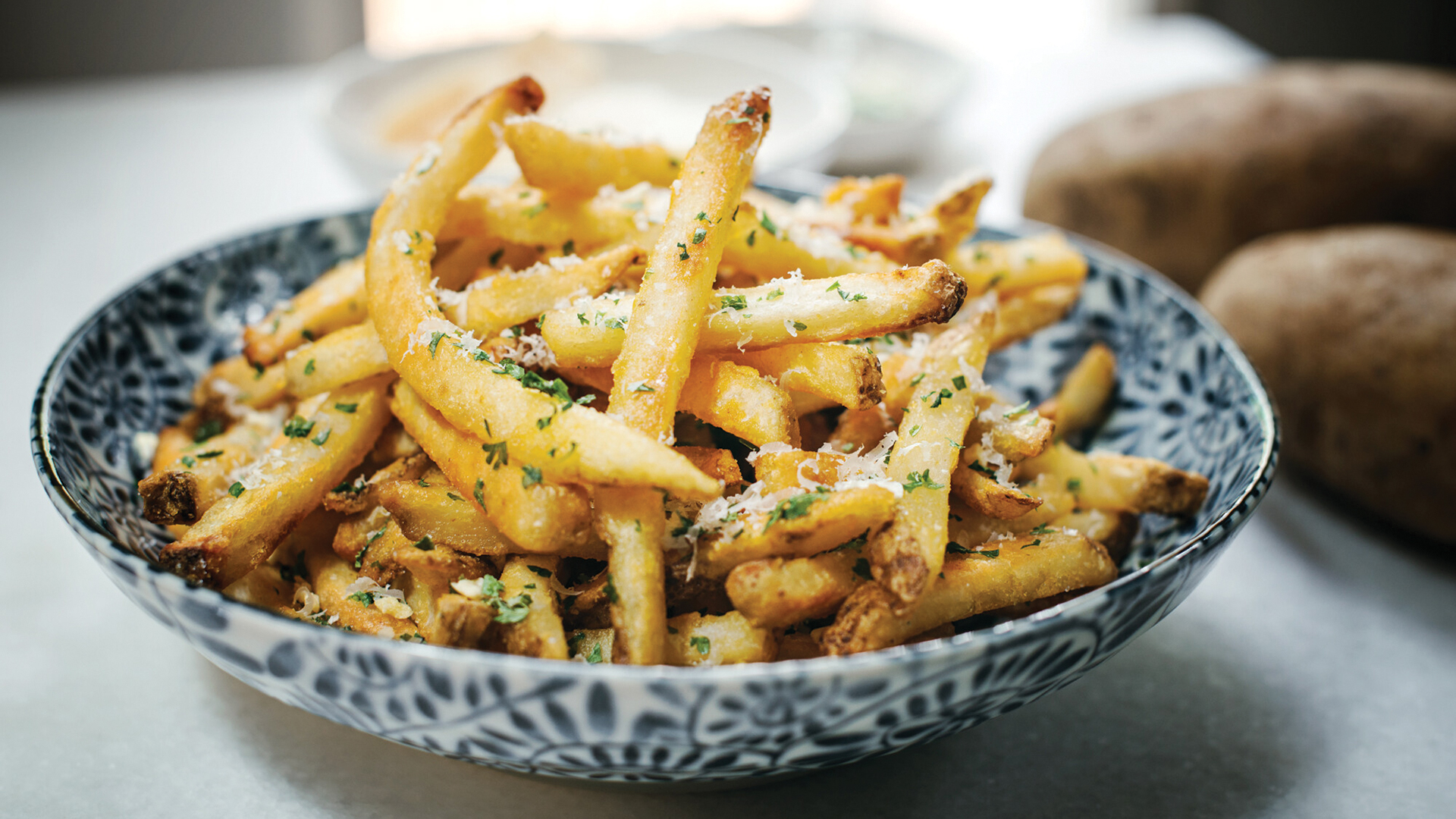
Ingredients:
- 35 pounds fryer oil
- 30 pounds rendered beef fat
- 50-pound box of Idaho® russets (60 count)
- 1 bottle truffle oil (La Truffiere or Urbani white truffle oil, preferred) – Pour truffle oil into a spritzer / spray bottle
- 5 pounds fresh ground Parmigiano-Reggiano
- 1/2 pound chopped chives
- Salt, fine
- Waxed delicatessen paper – Approximately 15″ X 10 3/4″ sheets
Directions:
- Combine fryer oil and rendered beef fat.
- Heat the fryer to 275° F.
- Cut the potatoes on the fry cutter with 3/26″ blade and place in water.
- Remove potatoes from water; shake off excess water and dry.
- Blanch the potatoes in oil.
- Cool blanched potatoes on sheet pans. (Potatoes may be refrigerated until service)
- Raise fryer heat to 350° F.
- Drop 2 handfuls of fries at a time into 350° F oil. Fry until golden brown.
- Lift fry basket and let excess oil drain.
- Place fries into a large mixing bowl. Spritz with truffle oil; sprinkle with fine salt, chives and Parmigiano-Reggiano.
- Remove from mixing bowl and place on a piece of waxed delicatessen paper. Roll up fries in paper and place them standing in a pint-sized glass.
Recipe #2 – Roasted Fingerlings
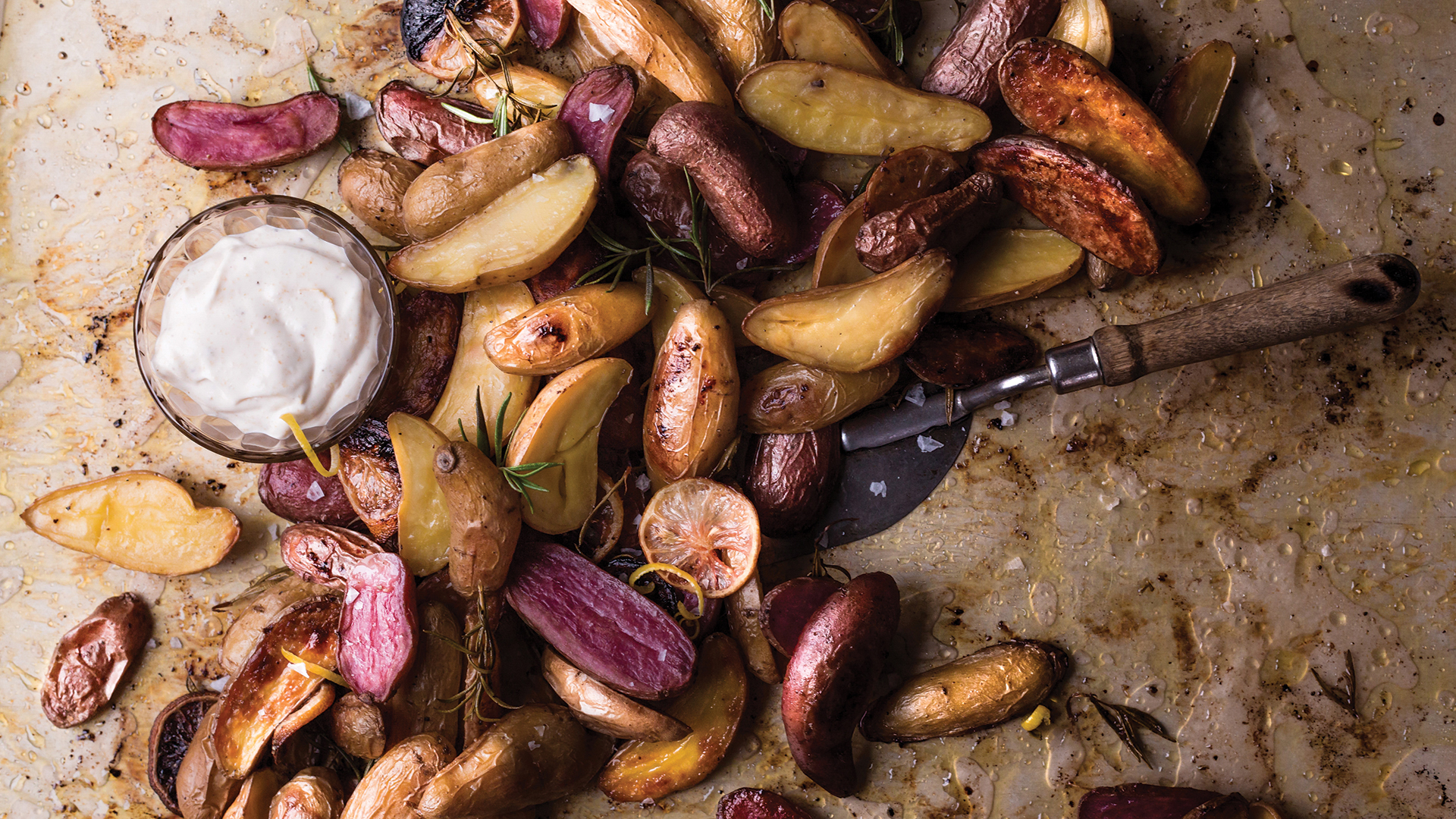
Ingredients:
- 2 pounds Idaho® fingerling potatoes, sliced in half lengthwise
- 6 tablespoons unsalted butter
- 2 teaspoons salt
- 1 teaspoon black pepper
- 2 tablespoons Litehouse® poultry seasoning
- 1 teaspoon Litehouse® freeze-dried chives
- 1 tablespoon Litehouse® freeze-dried parsley
Directions:
- Preheat oven to 375°F (350°F for convection).
- In a small pot, melt butter over medium heat. When the butter has just started to brown, remove from heat.
- Add dried herbs to barely browned butter.
- In a medium bowl, combine sliced fingerlings, butter herb mixture, salt, and pepper. Toss to coat potatoes.
- On a parchment-lined baking sheet, place potatoes cut side down in a single layer and roast for 25 minutes or until easily pierced with a knife.
Recipe #3 – Potato Dill Soup
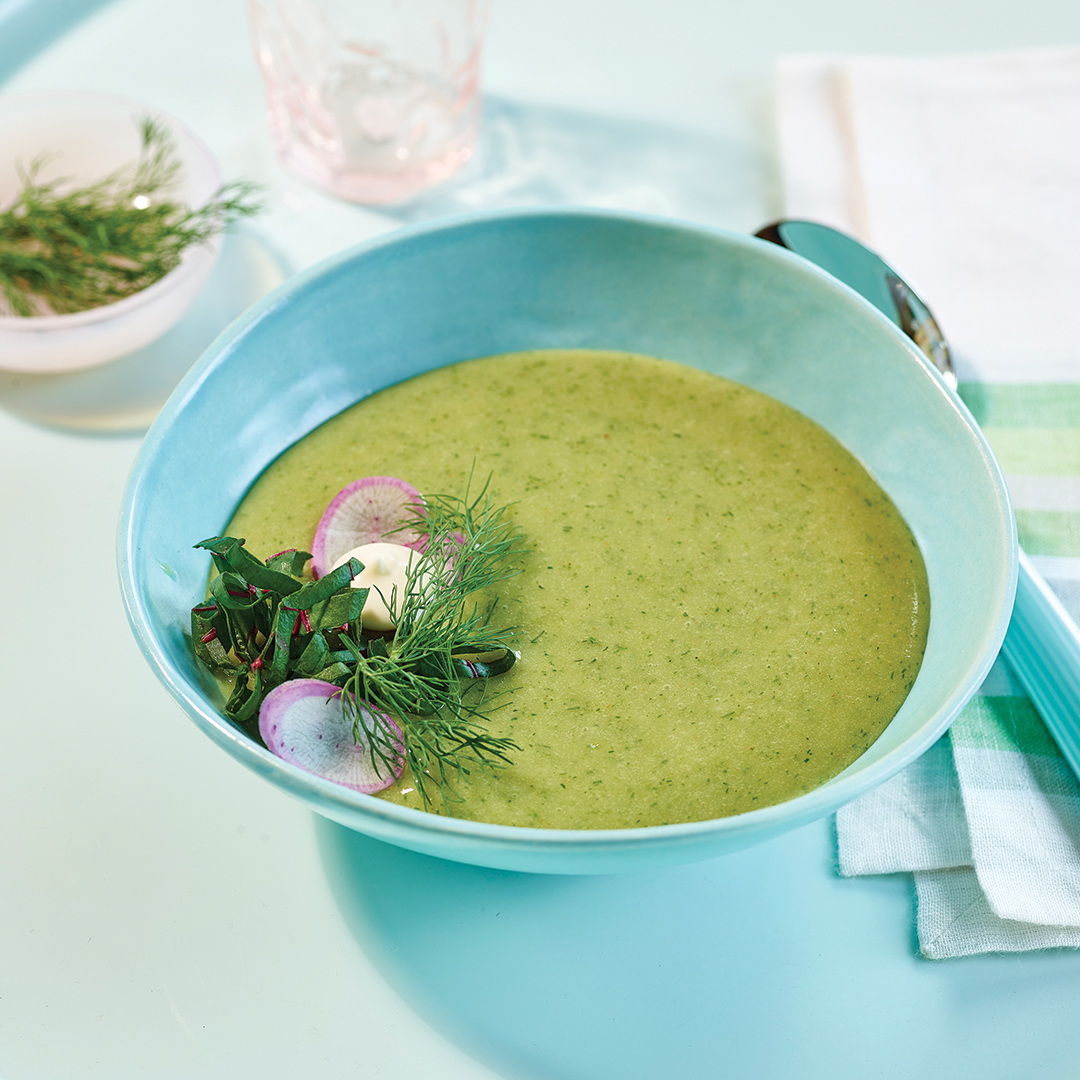
Ingredients:
- 1/2 pound fresh dill
- 4 large Idaho® Russet potatoes, peeled and quartered
- 2 cups leeks, cleaned and diced
- 3 cups vegetable broth or chicken broth
- 1/2 teaspoon ground nutmeg
- 1/2 teaspoon cayenne pepper
- 1-2 cups whole milk or half-and-half
- Red Swiss Chard, cut into ribbons
- Radishes, shaved, for garnish
- Fresh dill fronds, for garnish
- Crème fraîche, for garnish
- Scallion flower, for garnish
Directions:
- Bring large pot of water to a boil and blanch the dill, stems and all, until tender, 10 to 15 seconds. Transfer dill to an ice bath if serving soup cold or saving to serve soup later.
- In a blender, purée blanched dill with an equal volume of blanching water so it is completely emulsified. Mixture should be bright green. Pour into bowl and reserve. (No need to clean the blender before puréeing the potato mixture.)
- In a saucepan, over medium-high heat, cook Idaho® potatoes, leeks, broth, nutmeg and cayenne pepper until potatoes are fork-tender.
- Transfer mixture to blender and blend until creamy. Add milk or half-and-half until desired consistency is reached.
- Stir reserved dill purée into soup base.
- If serving hot, heat soup in sauce pan. Refrigerate if serving cold.
- Split soup between four bowls and garnish with Swiss chard, radishes, dill fronds, a dollop of crème fraiche and a scallion flower.
Note: All recipes are from the Idaho Potato Commission’s website.
What Makes Idaho Famous?
Blues and reds and goldens, oh my! The humble potato is anything but ordinary. Potatoes, which belong to the nightshade family (along with tomatoes, Chile peppers, tomatillos, eggplant, goji berries, and tobacco) come in hundreds of varieties that vary in texture, color and shape, and behave differently when cooked. Here is a breakdown of a few of the more famous tubers–which coincidentally was the first vegetable to be grown in space (by NASA in 1995 with the goal of feeding astronauts on long space voyages)–grown in Idaho and how best to use them. And remember, potatoes can be safely stored in a dry, dark area for up to three months but should never be stored in the refrigerator because, below 40 degrees, potato starch turns to sugar, changing the character and flavor and also potentially darkening the color of potatoes during cooking.
